The time of people is coming to an end: the essence of the film Automata plot summary, meaning, ending of the film, similar movies.
Country: Spain, Bulgaria
Genre: fantasy, action, thriller, drama
Year of production: 2014
Director: Gabe Ibáñez
Actors: Antonio Banderas, Dylan McDermott, Melanie Griffith
Slogan: “Your time has come to an end. Ours is just beginning”
The painting by Gabe Ibáñez is a rather intriguing representative of the science fiction genre. It presents one version of a possible future, and its main “highlight” was an impartial look directed at humanity as a whole.
What makes Autómata truly valuable, however, is the question at its heart. It goes like this: “What is life”? Both the heroes of the film and the audience will have to answer it.
What is the movie about
Description of the content of the film. The plot tells about the near future of our planet. Increasing solar storms turned its surface into a radioactive desert and the population dropped to 21 million people.
Against this background, the ROC Corporation began manufacturing pilgrim robots. Machines whose consciousness is limited by two protocols help people survive. Robots cannot harm humanity or modify themselves.
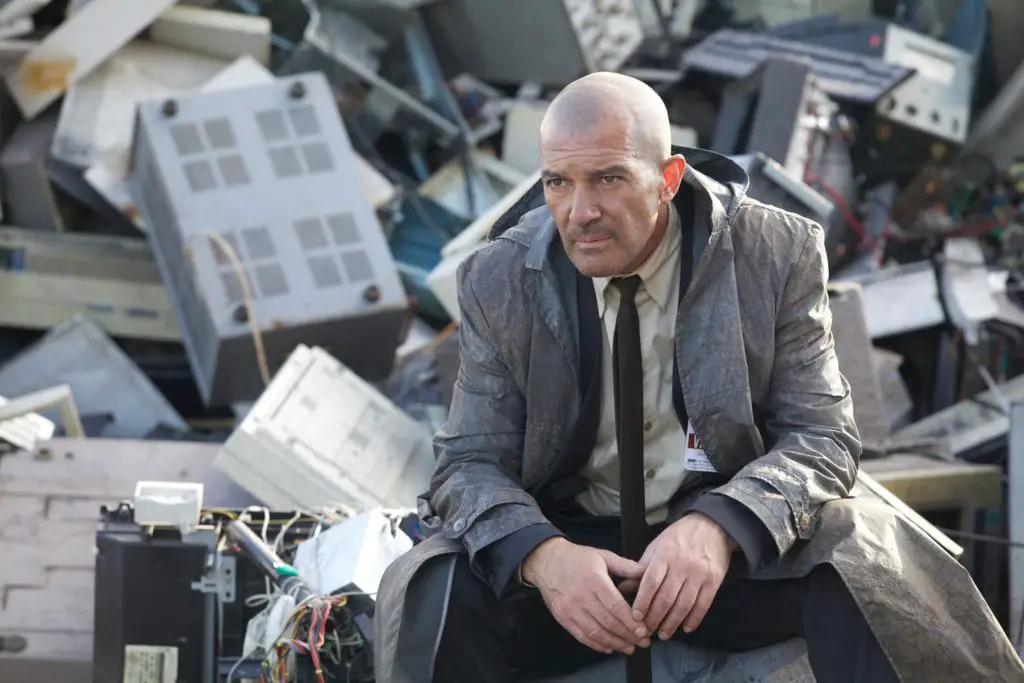 Antonio Banderas as Jacques Vaucan. Still from the film.
Antonio Banderas as Jacques Vaucan. Still from the film.
The main character of the film, Jacques Vaucan, works as an insurer in this company. One day his pregnant wife says that she wants to take on a robot as an assistant. But Jacques doesn’t really like this idea. Moreover, he constantly reflects on the topic of his former life, desperately yearns for a “car-free” space and dreams of moving closer to the ocean.
One day he is called on an urgent matter: a robot was discovered in the city, dead from a shot in the head. He was shot by police officer Sean Wallace, who thought the car was “fixing itself”—that is, violating one of the protocols. The robot did not have a second protocol. At a reception with his superiors, the main character asks to be transferred to the coast, but is refused. Then the boss, Mr. Bold, assigns Jacques to investigate the case of the shot robot.
Arriving at the place, Jacques notices a pilgrim heading into the forbidden area. Believing that the machine is doing this for a reason, Vokan follows it. However, he fails to find out anything – the robot destroys itself. The machine is sent to the production department. There, experts discover a nuclear battery in her “body”. Such batteries, which represent the strongest nutrient element, have not been released onto the market for a very long time…
Jacques is sure that the answer is simple: both affected robots were transformed by a certain Clockmaker. Bold sets a condition for him: he will find the culprit, and after that he will be allowed to transfer to any other place. Taking up the case, Jacques soon meets with Sean Wallace and asks him to help find the Watchmaker. The investigation leads them to a prostitute robot named Cleo and her pimp. Vokan tries to find out from the woman who the Watchmaker is, but she, as expected, does not make contact. In the end, Wallace provokes and wounds the robot with a shot. This allows them to track where it will be taken for repairs.
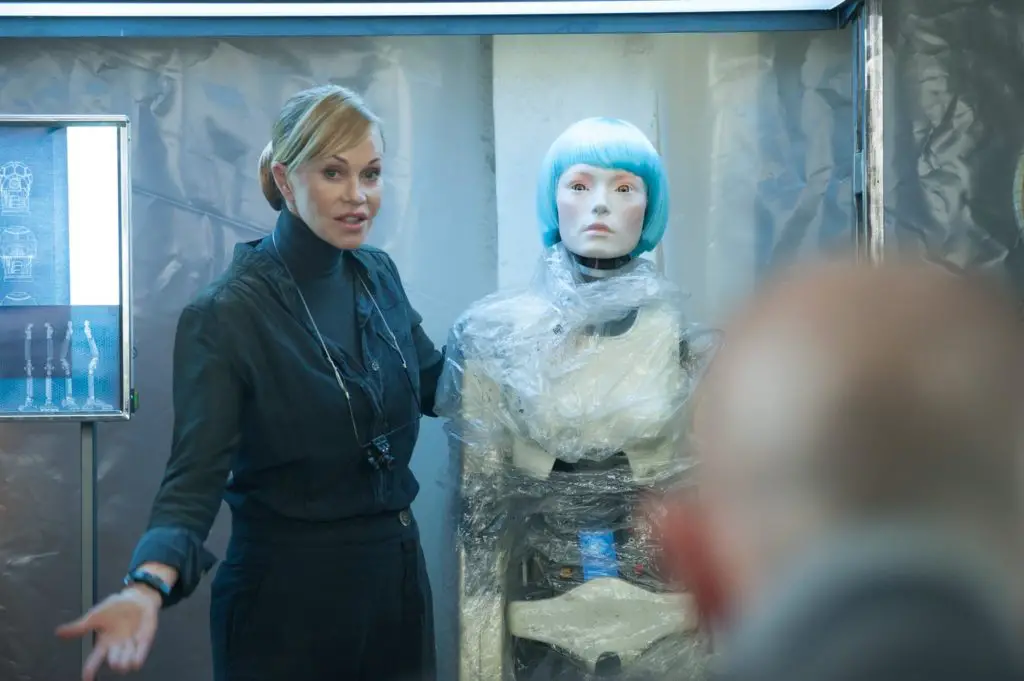 The role of Rachel Vokan was played by Birgitte Hjert Sørensen. Still from the film.
The role of Rachel Vokan was played by Birgitte Hjert Sørensen. Still from the film.
Soon Vokan meets with the alleged Watchmaker – Dr. Dupre. Jacques tells the female engineer that he is monitoring the transformations in two robots, asks for her help and leaves the bio-core for study. According to the doctor, robots are limited only by the second protocol and when it is eliminated, the intelligent evolution of machines is inevitable. Cleo is able to understand people much better than her “relatives” – her second protocol was not violated.
After this, Vokan writes a report on the work done, which goes to the desk of the director of the ROC manufacturing corporation, Mr. Hawk. In his response letter, he demands that the investigation be canceled, and he instructs his mercenaries to “take care” of Vokan.
Meanwhile, Dr. Dupre tells Jacques that the bio-core turned out to be working – she inserted it into Cleo, and the machine began to repair itself. Suddenly they are attacked. The doctor dies, and Jacques is rescued by Cleo and they run away together. During the chase, they and their pursuers have an accident… Jacques wakes up in the radioactive desert. He is wounded and four robotic pilgrims come to his aid. The man asks the machines to let him leave – he will not survive in the contaminated space, but they refuse.
Hawk comes to Bold and tries to convince him that the main character himself eliminated the second protocol. However, Bold is sure that there was no point in this; Vokan is loyal to the company and is not involved in the transformation. Jacques, meanwhile, sends his coordinates to his superiors and he sends Wallace to help him. He arrives at the scene and a fight begins between the insurer and the policeman. While protecting the robots and Cleo in particular, Jacques kills Wallace.
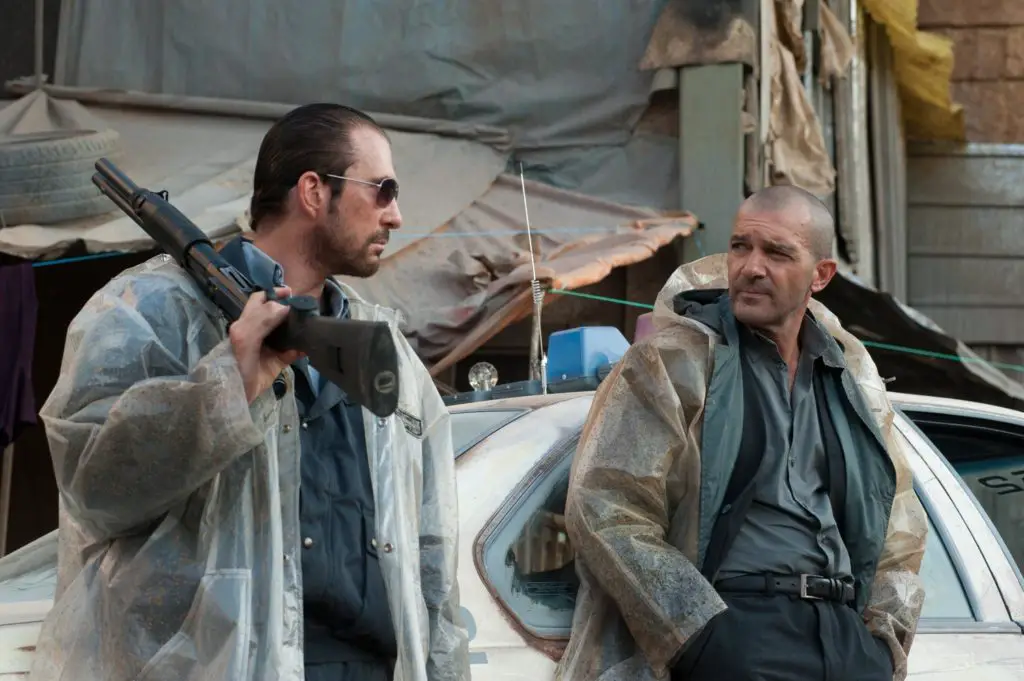 Dylan McDermott stars as Sian. Still from the film.
Dylan McDermott stars as Sian. Still from the film.
Soon Cleo leads Jacques to another robot and it turns out that it was he who improved his “relatives”. Vokan enters the hangar and realizes that the robot is making something. The machine asks the weakening Jacques to give the bio-core – according to her, it will help them not survive, but truly live. To do this, they will need to cross to the other side. Jacques agrees.
Company representatives, meanwhile, arrive in the desert and find Wallace dead. Hawke says his interpretation is probably correct: Vokan is dangerous. Almost simultaneously, Jacques’ wife arrives in the desert with her newborn daughter – and becomes a hostage. While trying to protect her and the child, Bold is injured.
The robots create a powerful mechanism that looks like a huge beetle, insert a bio-core into it and repair the old machine. Thanks to this, Vokan finally gets the opportunity to leave the radioactive desert. Meanwhile, representatives of Hawk arrive at the robots’ “headquarters” and the main machine informs them that they no longer obey humans…
Ending explained
The explanation for the ending of the picture looks like this. In the finale, a shootout begins, during which the villains die, and Vokan is finally united with his wife and child. A little later, Jacques says goodbye to Cleo, who goes to the other side. She and other robots are heading there because there is very strong radiation there – this means that people will not follow. Vokan leaves with his family for the ocean and on the way sees that the tormented Earth is slowly being restored.
You might think that the point of the ending of The Insurer is that humanity still has a chance, but it’s not that simple. The fact is that robots know that the background radiation will subside in a few centuries. The machines are confident that during this time people will disappear as a species – which means that (a holy place is never empty) they will be able to return and, probably, build their own civilization.
The meaning of the film
Domestic localizers, following a good tradition, changed the title of the film. In the original it is called “Automata”, which in Spanish means “Automatic”, and not “Insurer”. This is important because the main character in the film is not Jacques Vaucan at all.
The principles of robotics were formulated by science fiction writer Isaac Asimov. The creators of the tape modified them somewhat and reduced them to two protocols. Firstly, a machine cannot harm a person and must obey him. Secondly, a robot cannot harm itself unless this contradicts point 1. In addition, it cannot develop without human participation. Trouble begins when the smartest machine is found that can bypass the second protocol…
The director of the film faced a difficult task: on the one hand, to make a nod towards the classics, and on the other, to somehow stand out among similar films. He succeeded in both. On the screens we see not even a futuristic, refined little world, but rather a technological downgrade. This is not the Apocalypse yet – the worst is yet to come. And this is felt very strongly from the very beginning, and the ending emphasizes this idea.
There are no complex mysteries or hidden meanings in Gabe Ibáñez’s painting. However, “Insurer” cannot be called a simple tape. First of all, because it tries to answer an interesting and very relevant question today: do machines have the right to self-awareness?
In the film we see the last days of the human race. There are only a few cities left on the planet – everything else is burned out by radiation and turned into desert. Humanity is dying out and, probably, will soon give way to more advanced forms – robots. Smart machines are able to communicate and construct their own kind. And most importantly, they are able to feel.
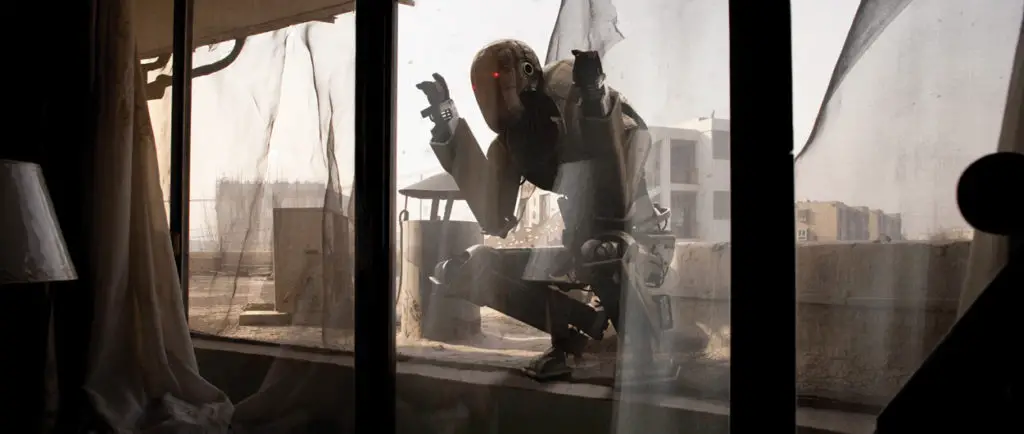 Still from the film.
Still from the film.
The director concentrates on the problem of interaction between two species capable of evolving and sharpens it. Penetrating deeply into the area of feelings and emotions, he asks a logical question – what is a person? Is this really the crown of creation and the “king of nature”? Or maybe we are just parasites that need to be destroyed?..
Truly, “The Insurer” can hardly be called an easy walk. This is an independent work and it invites us to think about questions that are not present in classic films about robots. It is naive to reflect on whether a machine has a soul; it is much more important to find out whether a person has one. The people in this film are shown very unpleasantly – they are either cowards or scum. But the robots are very cute in every sense…
Life will always find a way and appear. In a vast vast desert, a car can exist for a very long time. Over the course of many centuries, robots will build their own kind and evolve by changing their design. Mechanisms are presented here as another form of intelligence carrier that strives to understand the world. They are not going to start a rebellion and destroy all living things. They will simply bide their time. After all, everything in the world is cyclical: one thing is always replaced by something else…
What is the essence of the film? This movie is not only about the post-apocalypse and robots, but also about human stupidity and meanness – it is these two traits that confidently lead us into the abyss. Clever mechanisms, urban landscapes and radioactive deserts are just the scenery with which Gabe Ibáñez is trying to express a simple idea: our time is running out. However, you should not take everything that happens on the screen literally. To a greater extent, “The Insurer” is a parable steeped in symbolism. Reading them gives the key to understanding the plot.
So, the main character dreams of the ocean. It would seem, what’s wrong with this? However, the ocean is a powerful symbol that dates back to ancient civilizations. This is a symbol of life and death. The path to it means cleansing from all defilement and returning to the origins.
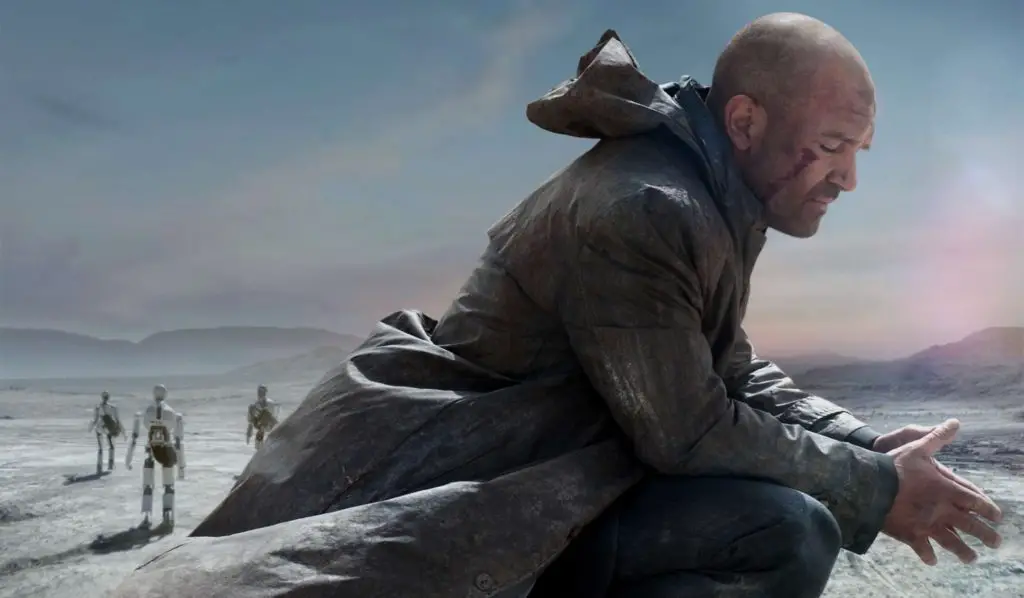 Still from the film.
Still from the film.
Similar films
Here are several films similar in plot and meaning to the film “Automata”:
- “Robot Child” (Australia, 2018). After the death of human civilization, Artificial Intelligence conducts experiments to revive people.
- “I, Robot” (USA, Germany, 2004). 2035 The main character hates robots. He has to investigate a case involving one of the “smart” machines.
- “Blade Runner” (USA, 1982). Rick Deckard is an android hunter. It must prevent the development of cybernetic intelligence.
- “A Robot Named Chappie” (USA, South Africa, 2015). The film tells the story of Chappie, the first robot capable of feeling and thinking.
- “Surrogates” (USA, 2009). 2057 A terrorist destroys androids. The main character will have to figure out the identity and motives of the criminal.







